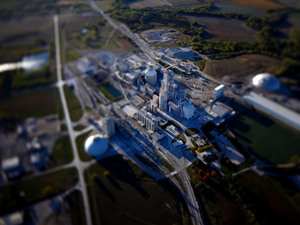I skipped the lead which is about people having mixed feelings about the trade off between providing employment and pollution. Personally I do not have mixed feelings because pollution controls supply jobs not take them away. But I skipped to the main fact that these kilns burn toxic waste but are much more loosely regulated. Nuff said.
http://www.npr.org/2011/11/10/142183546/epa-regulations-give-kilns-permission-to-pollute
Kilns ‘Not Designed To Burn Hazardous Waste’
Regulators have resisted, citing Ash Grove’s compliance with pollution standards. But those standards give cement kilns permission to pollute when they burn toxic junk for fuel.
Kilns are legally allowed to pump more toxins into the air than are hazardous-waste incinerators, which burn many of the same dangerous materials, including industrial solvents, aluminum plant waste and other toxic leftovers from the production of chemicals, oil and pharmaceuticals.

“The problem with cement plants that burn hazardous waste is that they’re not designed to burn hazardous waste,” says Jim Pew, a lawyer for the environmental group Earth Justice. “In my view it’s a loophole for the cement industry.”
Kilns like the one in Chanute that were built or rebuilt before 2005 can emit 43 percent more lead and cadmium — close to four times the hydrogen chloride and chlorine gas, and twice the particulates — than actual hazardous waste incinerators. Thirteen cement kilns in six states operate under those standards.
Three newer or upgraded kilns can emit even more toxic pollutants under EPA standards, including 18 times the lead and cadmium and 15 times the mercury.
These elevated levels are not harmful, says the EPA’s Brooks, because federal pollution limits are “set with a margin of public healthy and safety.”
The industry considers the safety margin huge — “far lower than what is necessary to protect human health and the environment,” says Mike Benoit of the Cement Kiln Recycling Coalition. The numbers are deceiving, he adds, and the actual emissions are minuscule.
“We’re talking about nanograms,” Benoit continues. “We’re talking about micrograms. Millionths of a gram — billionths of a gram.”
Mercury Pollution
But tiny measurements can add up, especially when it comes to mercury emissions at Ash Grove.
“In the year 2004, for example, the Chanute plant was the second-largest emitter of mercury in Kansas,” says Craig Volland, an environmental consultant who advises the Kansas Sierra Club on air pollution issues.
:}
Go there and read. More tomorrow.
:}
